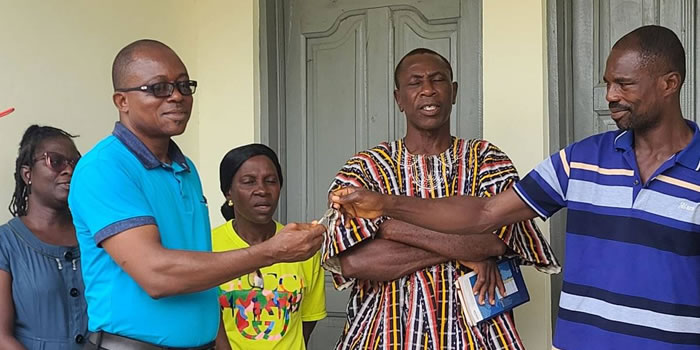

There are six educational circuits in the District, three of which are found in the Peki Town Council. Of the 51 pre-schools found in the District 18 are within the Peki Town Council area, while 30 primary and 22 Junior Secondary Schools respectively are found in the Council area. The remaining schools are found in the Tongor Kpalime Area Council. The distribution of basic schools by circuit in the district is shown in the table below.
Peki Central Circuit was created after 2009, while the Tongor Tsanakpe Circuit created in 2009 might have been the cause of the drop in enrolment in the adjoining Toh-Kpalime circuit.
There are more males than females in the overall enrolment in Basic Schools, both KG/Primary and JHS and there is the need to intensify the campaign on girl-child education in the district.
Distribution of 2nd Cycle Institutions
The table below shows the distribution of second cycle schools in the district. The Peki area has the highest concentration of schools both basic and second cycle in the entire district
Toh-Kpalime circuit is very deprived in the distribution of second cycle schools in the district, whereas they are concentrated in the Peki area.
Enrolment in Senior Secondary Schools is quite encouraging, but for the rather low figures for Kpeve Secondary Technical School. There is the need for the school management and all stakeholders to embark on enrolment drive within the catchment area of the school.
Staffing in the Basic Schools
As the table below indicates, the position in the District is rather poor at the Kindergarten level. This very foundation of education is loaded with a large number of untrained teachers. The situation is best illustrated by Primary education where on the average each school has 4.1 teachers instead of 6, if the head teacher teaches a class.
Learning Outcomes (Basic Schools)
The first ever BECE of the District started in 2005. A total of 525 students, made up of 299 boys and 226 girls took part in the examination. Only 41 students (7.8%) had aggregate 06 – 15, which is the really competitive one. 154 students constituting 29.3 % had aggregate 25 – 30 range which is really. These results were generally unsatisfactory.
There has not been any remarkable change in the results over the years, as shown in the table below.
The year 2011 saw significant advancement in our educational sector
The District undertook building of infrastructural development in most Basic Junior High and Senior high schools in the District as reflected on Works and Development Planning Sub-Committee Reports. The Assembly supported mock Examination activities in the Educational sector of the District.
School Feeding Programme
13 schools in the District are benefiting from the School Feeding Prgoramme, Plans are being initiated to add some other schools in the district to benefit from the programmme.
Special Education
1st October 2011 to 31st December 2011 59 teachers were trained on how to identify various disabilities in children and also educated them on inclusion education.
Refer to pdf file attached for tables
Date Created : 11/23/2017 5:29:09 AM










 facebook
facebook
 twitter
twitter
 Youtube
Youtube
 +233 593 831 280
+233 593 831 280 0800 430 430
0800 430 430 GPS: GE-231-4383
GPS: GE-231-4383 info@ghanadistricts.com
info@ghanadistricts.com Box GP1044, Accra, Ghana
Box GP1044, Accra, Ghana